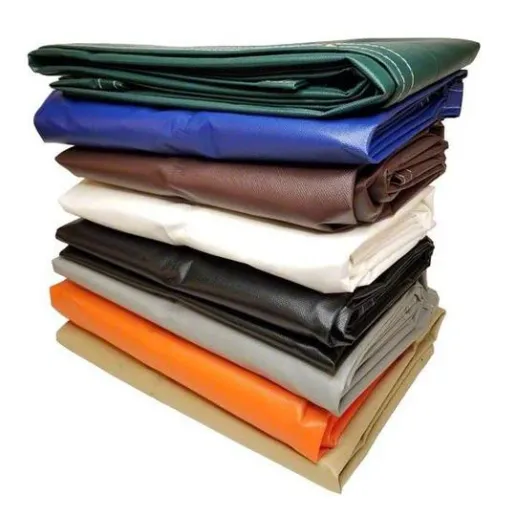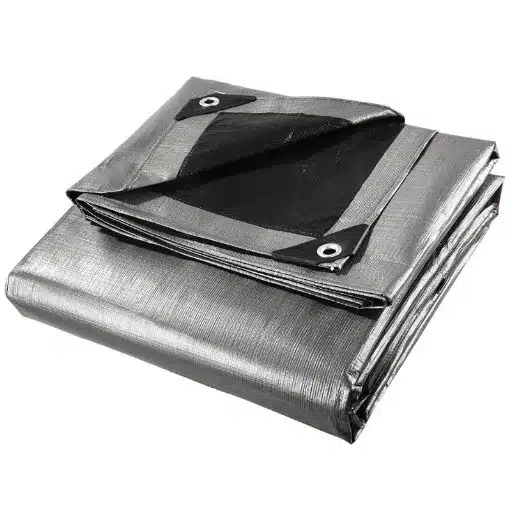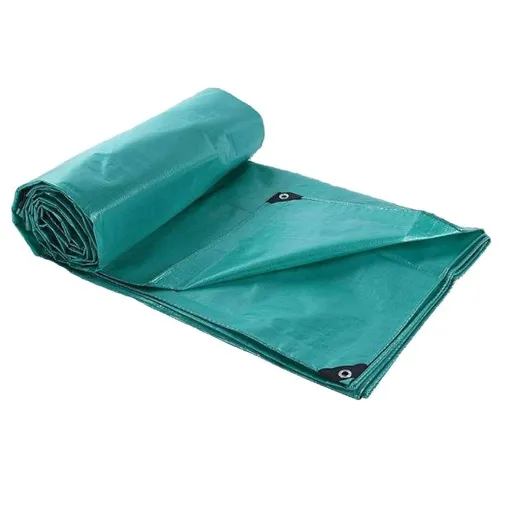The upkeep of your pool is closely related to choosing the appropriate ground tarp to ensure that your pool sustains in its longevity, cleanliness, and use. An excellent pool tarp would provide a shield against dirt, debris, and wear while simultaneously being the first line of defense to maintain the integrity of the pool itself. Now, think of the marketplace packed with a multitude of offers that all differ in materials used, designs, and even their purposes-such diversity can make the choice of cover that best suits your needs rather taxing. This article will lead you through the aspects that need to be considered such as durability, size, and the ability to be weather resistant; in other words, it will put you in the position to protect your investment and have stress-free swimming seasons.
Understanding Pool Tarps and Covers
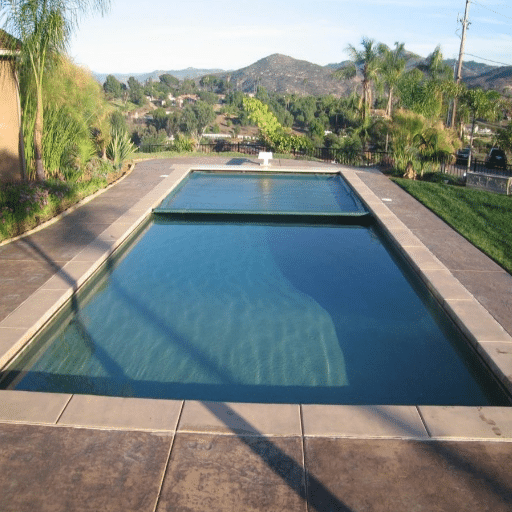
What Is a Pool Tarp?
Pool tarp, more often called pool cover, constitutes a special sheet of material put over and for the protection of a pool when not in use. Usually made from sturdy materials, such as polyethylene, vinyl, or mesh, they serve several purposes, including keeping out debris like leaves, dirt, or insects; stopping water evaporation; and conserving energy by maintaining water temperature.
Modern-day tarps generally have reinforced borders, grommets, or straps for installation, ensuring that the tarp holds even through extreme weather conditions. According to recent search data, questions on pool tarps often emphasize the importance of safety, as some covers are meant to prevent accidents by supporting the weight of a child or pet who may inadvertently step on one.
Key Insight: The pool tarp is more than just a cover-it is the very basis of pool maintenance, safety, and economy.
Advantages of Pool Cover Use
Pool covers boast a rather profuse list of benefits, the evidence of which is found in recent online queries. Here are the key advantages:
💰 Energy Savings
Pool covers stop evaporation, and according to the U.S. Department of Energy, evaporation can be the cause of at least 70 percent of the total loss of energy in pools. The less water that evaporates, the less water needs to be refilled by pool owners, which is not only expensive but also firms up the temperature with its heat retention.
🧹 Water Purity
Growing interest in pool covers as a deterrent to the intrusion of debris such as leaves and drops suggests that debris can clog the filtration system, therefore requiring additional maintenance. This, in turn, reduces the necessity to utilize chemicals since their presence will lessen contaminants.
🛡️ Safety
Safety is always the primary consideration for search data. In particular, it depends on modern pool covers, and safety ones will support weight if installed correctly. These measures allow families with little children or pets at the risk of falling into uncovered pools to protect themselves.
Pool covers thus present themselves as a workable and universal solution to what is generally ranked the top three concerns of pool owners according to recent search trends: energy saving, reduction of maintenance, and safety.
Pool Tarps Types
Depending on the statistics and trends derived from the latest search engine design, the types of pool tarps that attract most queries underscore a rise in the demand from consumers for customized solutions. They include:
❄️ Winter Pool Covers
Made for the cold months, these covers are robust, suitable for swearing snow accumulation with snow, ice, and debris accumulation. This becomes a beneficial option for pool owners in places with a rigorous winter since it ends with pools being endangered during stretched periods of disuse.
☀️ Solar Pool Covers
They reduce evaporation and absorb solar energy to heat the pool. Such covers may have seen increased interest because of their inexpensive method of conserving energy, which satisfies the broad concern of the world today for environmental sustainability.
🛡️ Safety Pool Covers
Offered for optimal load bearing, safety covers are frequently required by families to avoid accidents around pools. Search information speaks for the importance of safety covers, particularly for homes with children or safety concerns.
🌐 Mesh Pool Covers
Mesh covers represent an intermediate option in view of their capacity to endure while letting water drain through and blocking leaves and large debris. Searches for these covers seem to indicate their popularity in locations with frequent rainfall or heavy debris.
📐 Custom Fitting Pool Covers
Increased searches for custom solutions indicate a growing demand for pool tarps that can accommodate non-standard shapes and sizes of pools. These provide the best fitting coverage and protection to irregularly shaped pools.
The increasing variety in pool tarp designs is a move towards converging the specific needs of the consumer, such as climatic considerations, safety concerns, and green environment.
Choosing the Right Pool Cover
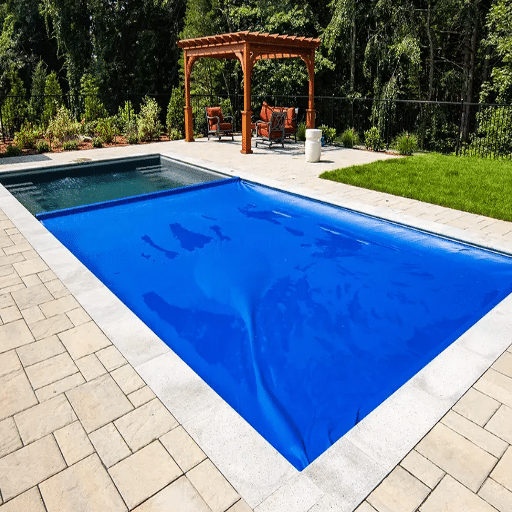
Points to Consider: Pool Size and Shape
One must know the exact size and shape of the pool before choosing the pool cover in order to complement the actual function and said protection. Data from the search engine’s most recent search indicates that there has been a significant rise in interest for terms screening “custom pool covers for irregular shapes,” reflecting an increased interest of the consumer market in custom solutions.
✅ Standard Rectangular Pools
Pre-manufactured covers are usually sufficient for standard rectangular pools.
🔧 Complex Shapes
Kidney, freeform, or L-shaped designs need covers custom made for them.
📏 Essential Measurements Include:
- Overall dimensions
- Variations in depth
- Any other features that go into the shape
- Steps or raised areas
Advanced design software and design materials in the present manufacturing arena now make it possible to produce durable and high-quality options that are exact to the personalized needs without reducing ease of use and longevity.
Climate Considerations for Pool Tarps
Your selection for a pool tarp ought to take the climate into account, observing its appropriateness to commute against defilement and to provide assistance to the pool.
Such charts backed by climatic data and material technologies will assist pool owners in making well-informed decisions to select one tarp made for the specific challenges of their environment, thereby providing better-year-round protection to their investment.
Budgeting for Your Pool Cover
The budget planning for the pool cover should factor in the materials involved, the size of the pool, and other additional specialized features. There is a wide price range of covers as pointed by the search engine data:
💰 Budget Options
Solar covers and lightweight covers
💎 Premium Options
Durable and automated covers
💡 Cost Factors to Consider:
- Size and shape (custom covers cost more)
- Material quality and durability
- Weather resistance features
- Installation requirements
- Automated systems
- UV-protective properties
- Anchoring/holding systems
- Storage reels
By tackling these factors during the budgeting process, the end-user is better equipped with comparative price solutions to snag the most pocket-friendly that offer the most protection and value.
Types of Pool Tarps Explained
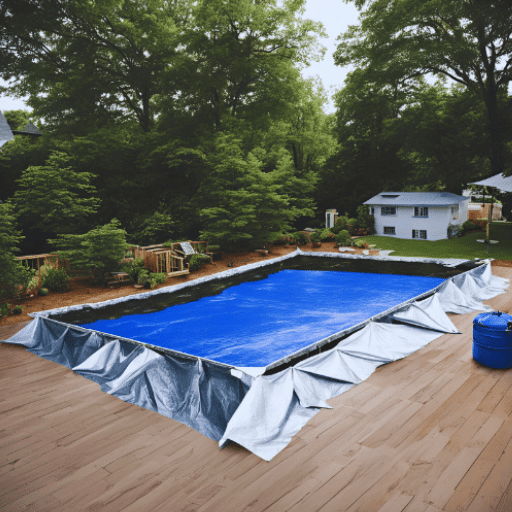
Mesh Tarps: The Pros and Cons
Mesh tarps currently dominate the market for pool covers because of their mix of durable structure, functionality, and affordability.
✅ Advantages
- Keeps debris like leaves and dirt from contaminating pool surface
- Allows water to permeate through the tarp
- Rare water buildup on top requiring little manual draining
- Lightweight material withstands prolonged sun exposure
- Minimal stress on the material
❌ Disadvantages
- Fine particles like dust or small pollen may infiltrate pool water
- Provides less insulation than solid covers
- May allow more heat and evaporation over time
- Requires occasional cleaning
Before buying: Check the grade of the material, the density of the mesh, and its compatibility to an anchoring system to guarantee top performance.
Solid Covers and Their Benefits
Solid covers have numerous benefits that make them the better choice for pool owners aiming for high-level protection and efficiency. Such covers are made from durable, non-permeable materials, such as vinyl, that effectively prevent the entering of debris, dirt, and impurities.
🌟 Key Benefits of Solid Covers:
💧 Superior Water Conservation
Effectively reduces evaporation, keeping in heat and conserving water
🚫 Complete Debris Protection
Prevents entering of debris, dirt, and impurities
🌱 Algae Prevention
Totally restricts algae growth by blocking light
⚗️ Reduced Chemical Use
Reduces need for chemical treatments in the off-season
Energy Efficiency: A solid cover is big in energy saving, which is very important information to many searches now, referencing search data indicating rising interest in energy-efficient and eco-friendly pool solutions.
To reap the full benefits of solid covers, pool owners have to pay more attention to reinforced stitching, thickness, and UV resistance to maximize longevity and performance in the long run. In addition, they should be paired with proper installation and automated systems to further enhance convenience and make an innovative solution for today’s pool management.
Solar Covers: Efficiency and Application
Solar covers, which are mostly known as solar heating blankets, work in making a pool energy efficient by minimizing water evaporation while using solar energy to heat the water in a pool naturally.
📊 Solar Cover Performance Data
🔧 Application Features:
- Courtesy of being paired with automated cover reels
- Thin, bubble-wrapped cover design
- Great for maximizing heat absorption
- Minimizes material wear from UV exposure
- Complete surface coverage required for best results
- Environmentally friendly solution
Bottom Line: Solar covers are an environmentally friendly and economical way for keeping pools comfortable throughout the year, providing dual action of great relief to the pool heater and energy cost expenditures.
Maintenance Tips for Pool Tarps
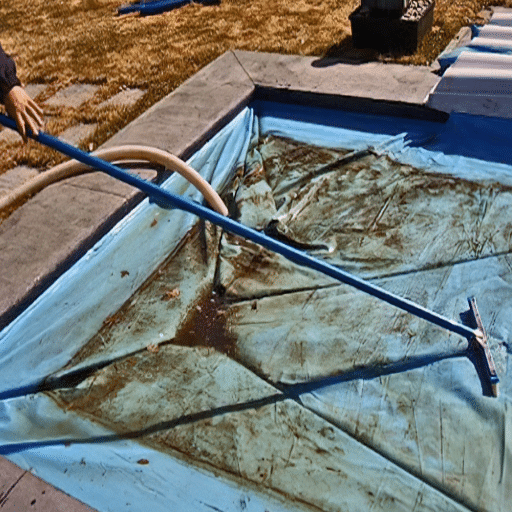
Cleaning Methods for Longevity
To ensure the prolonged effectiveness and durability of pool tarps, regular maintenance and cleaning are necessary. Follow this step-by-step cleaning process:
💡 Pro Tip: This will surely extend the life of your tarp while giving the best performance.
Proper Storage Methods
Storage is very crucial to maintain the durability and utility of a tarp. Proper storage techniques will significantly extend your tarp’s lifespan.
🔍 Pre-Storage Checklist
- Ensure the tarp is completely dry
- Prevent mold, mildew, or bacteria growth
- Fold neatly on natural creases
- Avoid stress points that may tear
🏠 Storage Environment
- Keep in cool and dry spot
- Shield from direct sunlight
- Prevent UV ray degradation
- Avoid discoloration of fabric
🛡️ Pest Protection
- Use airtight storage bags
- Consider sealed containers
- Keep out rodents or insects
- Prevent potential damage
Result: By following these steps, one should keep the tarp in its best condition, thereby extending its operational life.
Handling Wear and Tear
To limit the effect of wear and tear on tarpaulins, regular maintenance and proper care should be carried out. Based on recent search trends, users frequently ask about “The best ways to repair a worn or torn tarp”.
Bottom Line: By the application of these measures, users can combat wear and tear, keeping the tarp functional and effective.
Frequently Asked Questions
The best tarp for above ground swimming pools is a heavy-duty tarp cover that can withstand the elements. Look for a waterproof tarp with reinforced edges to fend off punctures and tears. Poly tarps are a favored choice since they offer durability and UV resistance. Consider tarps equipped with grommets every few feet for easy securing. A rectangular ground cloth for rectangular pools can provide extra protection to uphold the integrity of your pool liner.
To protect your pool with a ground tarp, first lay down a durable pool tarp underneath it. This will act as a barrier against sharp objects that might puncture the pool liner. The heavy-duty ground cover will enable it to bear the weight and pressure from water. Just make sure the tarp is somewhat larger than your pool size for full coverage. A liner pad for above ground pools will provide additional protection, creating comfort and safety.
Yes, putting a tarp under the pool is a perforation-protection measure. A ground swimming pool tarp is the protective layer between the pool and the ground. Consider a tarp that suits this very purpose: for example, a waterproof pe swimming pool ground cloth that can endure varying ground conditions. Thicker ones (in the neighborhood of 12 mil) will help repel sharp rocks or nasty roots. Ensure the tarp does not shift by firmly securing it.
A swimming pool ground cloth offers injuries and puncture protections, providing a smooth surface necessary for a long-lasting pool liner. Ground cloths assist in preventing mold and mildew formation, especially in highly moist areas. For above ground pools, waterproof PE swimming pool ground cloths are a top recommendation. Using a ground cover will greatly increase the life of your pool.
The size, material, and type of cover should be considered in choosing the right cover for your rectangular pool. Heavy duty covers are the best option to keep the pool safe during winter. Look for options having UV resistivity in them to prevent damage from sunlight. A tarp cover with reinforced edges will further keep it from weathering too much; they are especially tough when the weather is harsh. Further enlarge your options to mesh-type covers that would allow water to drain through, while blocking debris from coming in; these should fit very snugly, preventing gaps where debris can enter.
Reference Sources
📚 University of Illinois – IDEALS Repository
This document discusses the implementation of TARP (Tunnel and Reservoir Plan) and its impact on water quality and flow. While not directly about pool tarps, it provides insights into ground-level water management and tarp applications.
🛣️ University of Minnesota Field Guide
This guide addresses water pooling and drainage issues, which can be relevant for understanding the role of tarps in managing ground-level water for rural roadside ditches maintenance.
🏛️ US Environmental Protection Agency (EPA)
This document discusses sediment control and the use of pool curtains, which may provide insights into tarp applications for ground-level water management and environmental protection.

